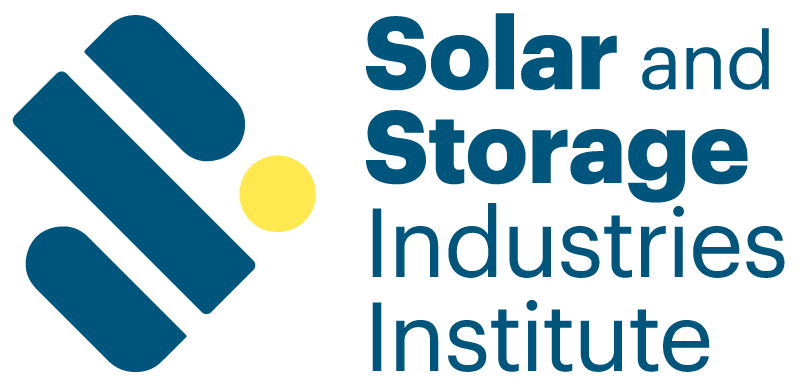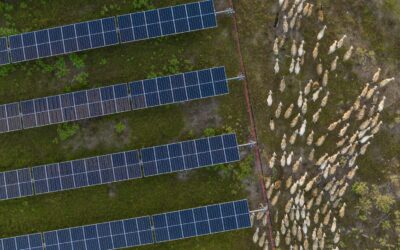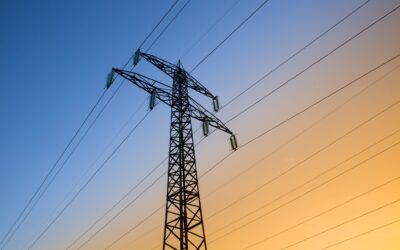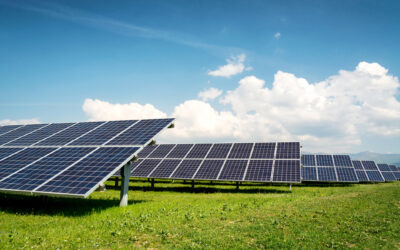While the United States races to switch to clean, reliable solar and storage, all of this work could come to a screeching halt if we don’t address the elephant in the room: our electric grid is too small.
Over the next 15 years, the electric grid needs to double or even triple in size if we want to keep pace with electrification demands and accommodate the influx of renewable energy. This is a massive challenge considering the grid was slowly and haphazardly built by a patchwork of utilities over the last century, making any major upgrades nearly impossible. If we don’t act quickly, the consequences for our planet and public health could be catastrophic.
This challenge with our grid is so big and so important, even the New York Times is writing about it.
What we do with this information is still up for debate.
The Solar Energy Industries Association and the Solar and Storage Industries Institute have a few ideas to add to the conversation about our broken electric grid.
The Way We Build the Grid is Broken
One of the biggest problems is that we do not have a central agency coordinating grid upgrade efforts.
Currently the grid is “planned” and built by disparate utilities that are regulated by a variety of state, regional, and public entities. If a developer wants to add new electric capacity to the grid, the project developer must work with the local utility to identify the equipment and electric lines needed to connect to the grid. In many areas, the grid is already completely saturated, making the interconnection process incremental and slow. In some jurisdictions, it could take up to four years to connect a project to the grid.
This fragmented, incremental grid build-out is slower and less efficient in the long run.
More inter-regional transmission planning would certainly help, but we need to go a step further if we want to add hundreds of gigawatts of renewable energy to the grid.
To do this, we need an apolitical federal entity that is explicitly tasked with planning and building out the inter-regional transmission grid. This entity would identify, plan, and fund inter-regional transmission lines in close collaboration with local communities and states. Similar to the North American Electric Reliability Corporation, this entity would be a regulatory body that works across the grids and independent and regional transmission organizations, helping to serve as a neutral arbiter that is solely focused on the efficient and safe build-out of the grid.
While it’s up for debate where an entity like this might “live” within the federal government, regardless, a change like this would require Congressional approval and funding.
The Trillion Dollar Question: How Do We Pay for Grid Upgrades?
In addition to sound planning practices, we need to figure out how to finance these upgrades which could amount to $1-2 trillion in investment by 2050.
Under the current model, project developers and ratepayers finance grid upgrades, but for a massive grid build-out on a tight timeline, this model simply isn’t possible.
For larger projects trying to connect to the transmission grid, this model is already strained by high interconnection costs, a growing interconnection queue, and a lack of transparency throughout the interconnection process. Over the last three years, the cost to interconnect a project to the transmission grid in the Midwest has doubled , leading to a large number of utility-scale renewable energy projects that no longer pencil out and ultimately need to be scrapped.
This same issue is playing out on the smaller, local grid that carries power to homes, known as the distribution grid. In some areas, it has become prohibitively expensive to connect even a small solar project. While projects like SolarAPP+ are helping to speed the permitting process for residential solar installations, the same grid constraints remain, leading to costly upgrades to local grid infrastructure and wait times that can exceed four months.
The Public Options
Even if projects could individually fund the upgrades, the resulting grid won’t be prepared to accommodate massive new demand for electricity from heating and transportation.
To reach our climate goals by 2035, the United States needs a substantial influx of public dollars.
While funding one coordinating agency through the appropriations process would be the fastest and most efficient way to get this work done, there are ways to finance this work through existing channels.
For example, the Rural Utility Service could issue low-interest federal loans that are paid back over several decades through modest electric rate increases, helping to ensure rates don’t go up drastically all at once. Congress could give the U.S. Department of Energy permission to issue zero interest or low interest loans that speed grid upgrades.
In addition, Congress could expand the scope of the Transmission Infrastructure Program (TIP) to allow federal entities like the Western Area Power Administration to build transmission for the public good, rather than simply lending money for transmission.
Co-funding: Sharing is Caring
Public private partnerships are another option.
Under this model, the project developer pays for part of the grid upgrades, while customers pay the smaller remaining portion. Co-funding planned grid upgrades recognizes that a robust grid serves both developers and customers because it makes space for more renewable energy and prepares the grid to deliver more electricity as customers switch to electricity for transportation and heating.
In some jurisdictions, this model is already working.
In Washington, DC, Pepco will soon charge a flat, pre-determined fee to interconnect projects. This will cover about 80% of the cost, while the other 20% being financed by utility customers. Massachusetts is running a pilot program which similarly shares the costs between developers and customers.
The Path Forward
While there are a variety of ways to upgrade the grid, there’s no getting around it: we need substantial public funding to build out the grid and an empowered national planning agency to coordinate the effort.
While there is active legislation that can help us coordinate grid infrastructure upgrades and improve systemwide reliability, legislators need to consider holistic solutions that can help us pay for and achieve a substantial grid build out over the next decade.
Without a holistic approach to grid infrastructure planning and upgrades, we’re going to keep muddling along.
Joan White is the director of storage and interconnection policy at the Solar Energy Industries Association (SEIA).



